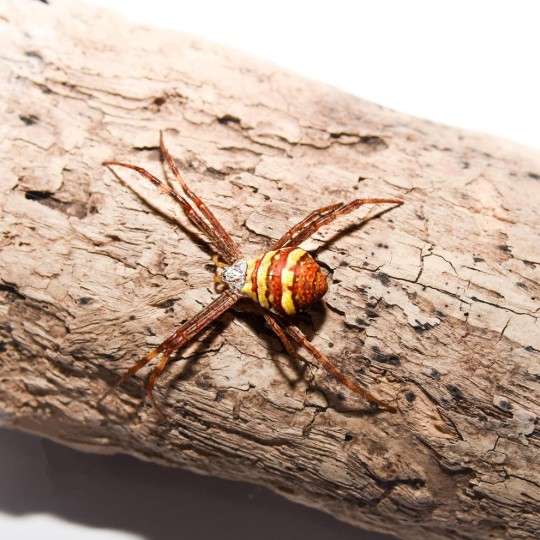#tropicalspider
Explore tagged Tumblr posts
Text
🕷️🌴 Tropical St. Andrew's Cross Spider (Argiope aetherea)! With its stunning, cross-shaped web patterns and vibrant colors, this spider is a true gem of the arachnid world. Perfect for enthusiasts looking to add a touch of exotic beauty to their collection. 🌟🕸️
Don’t miss out on this unique opportunity to own a piece of nature's artistry!

#SpiderLove #ArachnidArt #ExoticPets #NatureBeauty #TropicalSpiders #WebMaster #ArgiopeAetherea
#invertebrates#creepycrawlys#invertebratepets#spiders#exoticpets#australia#australianwildlife#Tropical St. Andrew's Cross Spider (Argiope aetherea)
1 note
·
View note
Photo

The elaborate weavings of an Orb Spider by jungle mama The right moment! The right light! And there was its creator, in glowing gold and black, spanning it assertively. The genus Argiope includes rather large spiders that often have a strikingly colored abdomen. Most countries in tropical or temperate climates host one or more species that are similar in appearance. The etymology of Argiope is from a Latin word argentum meaning silver. The carapace of Argiope species is typically covered in silvery hairs. The average orb web is practically invisible, and it is easy to blunder into one and end up covered with a sticky web. The visible pattern of banded silk made by Argiope is pure white, and some species make an "X" form, or a zigzag type of web (often with a hollow centre). The spider then aligns one pair of its legs with each of the four lines in the hollow "X", making a complete "X" of white lines with a very eye-catching spider forming its centre. The zigzag patterns, called stabilimenta, reflect UV light. They have been shown to play a role in attracting prey to the web, and possibly in preventing its destruction by large animals. The centres of their large webs are often just under 1 metre above the ground, so they are too low for anything much larger than a rabbit to walk under. The overtness of the spider and its web thus has been speculated to prevent larger creatures from accidentally destroying the web and possibly crushing the spider underfoot. Other studies suggest that the stabilimenta may actually lead predators to the spider; species such as A. keyserlingi place their web predominantly in closed, complex habitats such as among sedges. As Argiope sit in the center of their web during the day, they have developed several responses to predators, such as dropping off the web, retreating to the periphery of the web, or even rapidly pumping the web in bursts of up to 30 seconds. Orb Spider, Biscayne Park, FL www.susanfordcollins.com https://flic.kr/p/2gr2dic
0 notes